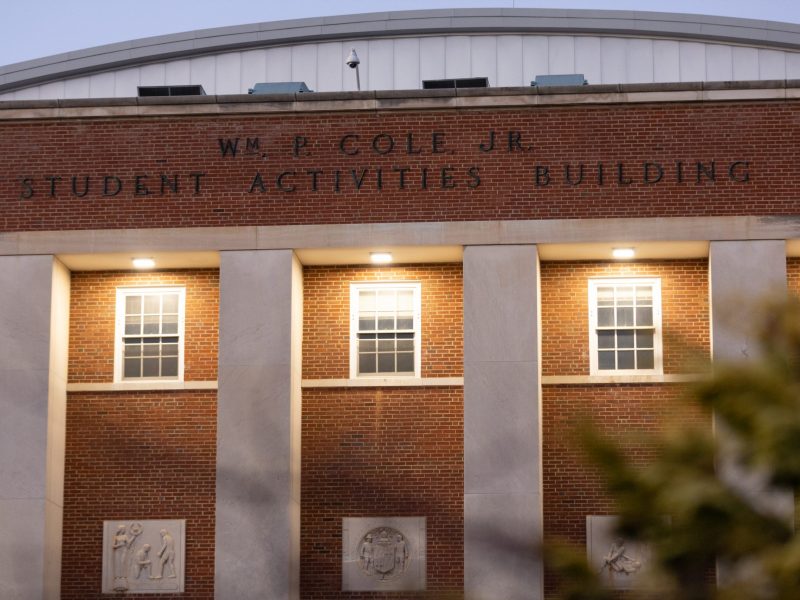By Evan Berkowitz
For The Diamondback
Gov. Larry Hogan announced a plan to cap tuition increases at University System of Maryland institutions at 2 percent this year at a news conference in Van Munching Hall Tuesday afternoon.
“We will be partnering with our colleges and universities to invest an additional $17.5 million to specifically provide tuition relief,” Hogan said to an audience of about 40 people. Previously, the 12 system institutions, as well as St. Mary’s College of Maryland and Morgan State University, faced increases of up to 5 percent, he said.
The state legislature passed a plan similar to Hogan’s last April that capped tuition increases at public universities at 2 percent for the current fiscal year.
The governor also introduced plans to allocate $380 million to capital projects at system schools, including $25 million for the University of Maryland’s A. James Clark Hall. The project is slated to be completed in June and will cost $169.1 million, The Diamondback reported last February.
Another one of Hogan’s proposals, the Student Debt Relief Act of 2017, would allow state residents making less than $200,000 or couples making less than $250,000 annually to deduct student loan interest from their state income taxes. Residents could save $20 million per year as a result, Hogan said.
The act would take effect in 2018 if passed by the General Assembly, and all of Hogan’s proposals — which he said have received broad bipartisan support — will go before lawmakers in Annapolis when the 2017 legislative session begins Wednesday.
System Chancellor Robert Caret, who stood at the conference alongside Board of Regents members and university President Wallace Loh, said he hoped the legislature would pass Hogan’s initiatives.
“Obviously, the governor is very, very committed to keeping the cost down for students, and hence, hopefully decreasing debt as part of that,” he said.
When it comes to capital projects, the system needs to focus more on the long-term operation costs of opening new buildings rather than just their one-time capital expenses, Caret said.
“Some of these buildings, they’re huge, they’re complex, there’s all kinds of technology; the operating costs are significant,” he said. “As we plan these buildings going forward, we’re going to take even more seriously what’s going to happen when we open them and make that part of our decision-making.”
Hogan also proposed allocating $89 million for a new biomedical sciences education building at the Universities at Shady Grove, $40 million for continued construction on the interdisciplinary life sciences building at the University of Maryland, Baltimore and $26 million for a new science facility at Towson University, among others.
The plan would also provide $56 million to cover all projects requested by this state’s community colleges, Hogan said.
“Our administration’s top priority has been and will continue to be education, including higher [education],” he said.
Loh affirmed his support of this commitment.
“[Hogan’s] going to reduce their tuition increases [and] therefore have a favorable impact on debt, and then [there’s] all his commitments in capital projects,” Loh said when asked how the governor’s proposals would affect students. “This is real commitment to higher education.”



